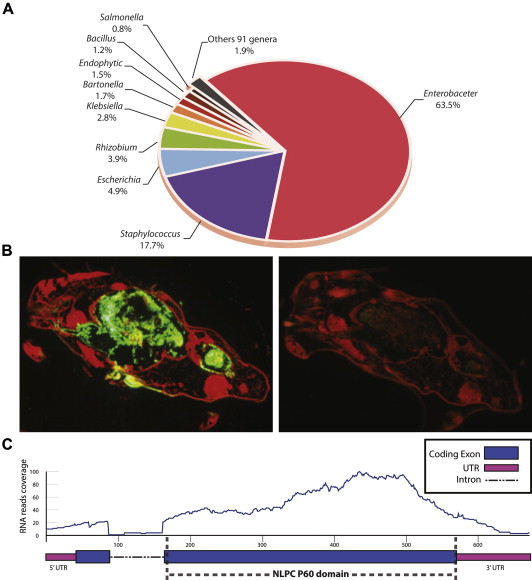There is a new genome paper out that should be of interest to many thinking about the built environment, microbes and allergens and related topics: The draft genome, transcriptome, and microbiome of Dermatophagoides farinae reveal a broad spectrum of dust mite allergens. Published as an open access paper (yay) in the Journal of Allergy and Clinical Immunology by Ting-Fung Chan et al. There are some quite interesting hypotheses and findings reported here and I have highlighted a few below (quoting directly from the paper – so these should be viewed with a bit of skepticism I suppose):
- “A novel major allergen, ubiquinol-cytochrome c reductase binding protein—like protein, was found and designated Der f 24”
- “The predominant bacterial genus among 100 identified species was Enterobacter (63.4%).”
- “Our draft genome included annotated genes for a full phototransduction pathway, excepting rhodopsin, as well as a candidate gene (DEFA_098690) encoding a class A rhodopsin-like GPRadr2. Recovery of the GPRadr2 protein completed the phototransduction pathway, providing support for Furumizo’s assertion that D farinae might have photoreceptors responsive to light in the 500- to 575-nm range.”
- “The dominant presence of Enterobacter species in the D farinae microbiome, rather than Bartonella species, as previously suggested, is noteworthy given their potential clinical importance; enterobacteria are isolated in approximately 10% of nosocomial respiratory tract infections, with 60% to 70% of those being E cloacae”
- “The mites died when exposed to ampicillin in culture (data not shown), indicating that they depend on their microbiome.”
- “Given the mite’s reliance on bacteria for some essential nutrients, such as thiamine and aromatic amino acids (see Figs E12-E14), our observations support the view that there is a symbiotic relationship between D farinae and its gut microbes.”
I have to confess here – I have never really thought deeply about the role of the microbiome of the dust mite in allergy and in the life of the dust mite. I should have. But I have not – until now. This paper makes me realize that the microbiomes of the animals – even the tiny ones – are important components of the microbial ecosystems in our built environment.

Thank you for posting this! I have really awful dust allergies, and it’s hard to live with sometimes. I appreciate any research on the subject because it’ll hopefully make my life easier in the future. Also really happy this is open access so I can share it with my family (who also have severe dust allergies)!